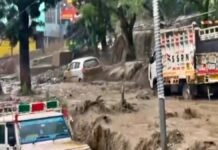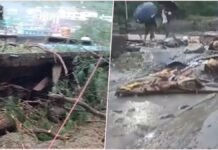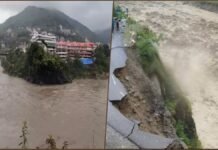
Chamoli: In Uttarakhand once again, a major glacier is reported to have broken. The army has confirmed this. The Border Road Task Force commander, Colonel Manish Kapil, said that a large glacier has broken on the India-China border near Joshimath in Chamoli district. According to the information, this glacier is broken between Malari and Sumna near ITBP’s 8bn posts. It is being told that it is very big and a big accident can also happen due to this. It is being told that due to its breakdown, the water level of the Rishiganga river may rise. Due to which serious problems can occur.
However, there is no information about loss of life and property. But on receiving the news of the accident, the ITBP jawans have become alert and the low lying areas are being monitored.
According to Chamoli police, the information about breaking the glacier is getting viral on social media. The police are collecting information about this. However, due to bad weather, the phone could not be contacted. Teams have been dispatched to take stock of the situation. In such a situation, avoid moderation and spreading rumors.
At the same time, there has been heavy rains with hailstorm in rural areas including Pauri and Srinagar Garhwal. Due to the continuous rain for three days, the temperature has come down. The district has recorded the highest rainfall in the last 24 hours in Thalisain, Pauri and Srinagar regions, while the rainy season continues.
The weather patterns have completely changed in Pithoragarh for the last two days. After a long time, high altitude areas of the district received snowfall in the month of April. After the snowfall in and around Munsiyari, there has been a huge drop in temperature. Along with Munsiyari, snow has fallen very close to Rajarambha, Panchachuli, Khaliatop, and Kalamuni. At the same time, rains are continuing in the low-lying areas.

Significantly, on the morning of February 7, the Rishiganga Valley in Chamoli district was flooded due to the breaking of the glacier. Many people died in this natural disaster. Relief and rescue operations were carried out for several days. The 13.2 MW Rishiganga Hydroelectric Project was completely destroyed due to the floods while Tapovan Vishnugad suffered extensive damage.




















































